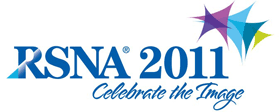
Abstract Archives of the RSNA, 2011
Faisal Siddique Raja BSc, MD, Presenter: Nothing to Disclose
Justin Amann MD, Abstract Co-Author: Nothing to Disclose
After hours radiology coverage is increasingly discussed and debated, as is the on-call role of radiology residents. This study attempts to identify trends with respect to on-call radiology cases; specifically, total number and types of studies, as well as possible variations by month, day of week and resident level of training, in a Canadian academic healthcare setting.
A retrospective review of all after-hours radiology consultations between January 1 2005 and December 31 2009 performed by radiology residents at the University of Western Ontario in London, Ontario was performed. On-call residents (1700-0800 weeknights and 0800-0800 on weekends/holidays) log their preliminary reports on the “UWO Radiology Preliminary Reports” website, including demographic data, type of study and indication.The program records date, time and resident level of training with each report.
53242 patients were consulted on by the on-call radiology resident during the years 2005-2009. Total number of consultations increased by 16% over this time period, with CT, ultrasound and MRI increasing by 11%, 18% and 2885%, respectively. Fluoroscopy declined by 40%. Monthly variability in mean number of on-call consultations performed per day was also noted; January was the least busy with a mean of 26.4 daily consultations, whereas August and December were the busiest with 30.9 and 31.0, respectively. With regards to days of the week between the hours of 1700 and 0800, Wednesday appeared least busy with a mean of 18.6 consultations, whereas Friday and Saturday were most busy with 21.3 and 21.1 consultations, respectively. No significant difference was noted in the number of consultations performed by residents at different levels of training.
Radiology after-hours workload is steadily increasing, with increases in all modalities except for fluoroscopy. However, the increase is consistent with increases in other acute care metrics in London, including ER visits and hospital admissions. Slight variability in volume of on-call consultations was noted with regards to particular months and days of the week, though no significant variability with regards to level of training was demonstrated.
Identification of these trends is useful in guiding radiology resident preparation for on-call responsibilities, as well as resident and staff on-call scheduling and resource allocation.
Raja, F,
Amann, J,
Trends in Utilization of After-Hours Radiology Consultation in an Academic Health Centre Setting: 2005-2009 . Radiological Society of North America 2011 Scientific Assembly and Annual Meeting, November 26 - December 2, 2011 ,Chicago IL.
http://archive.rsna.org/2011/11003796.html

